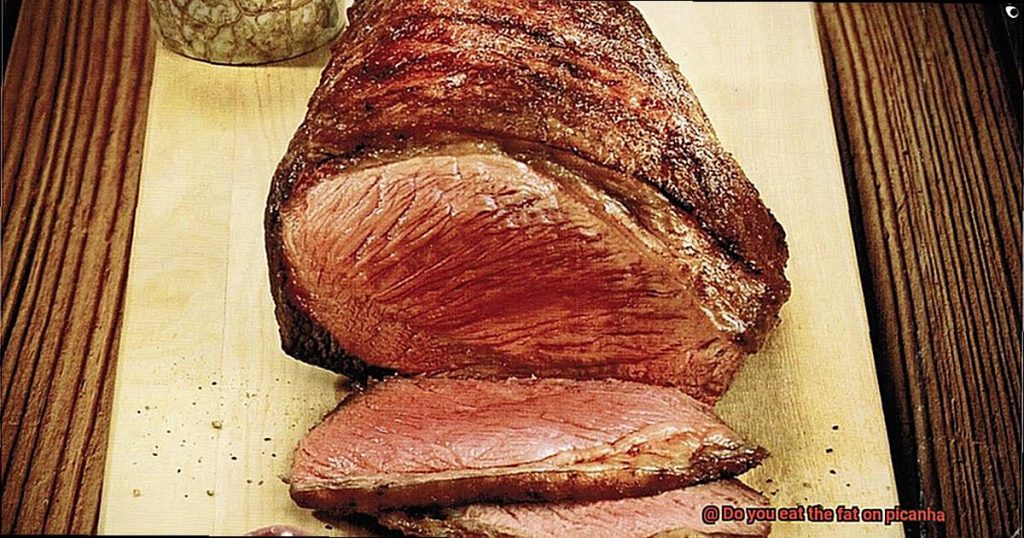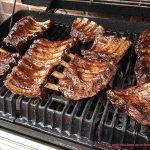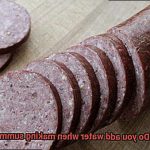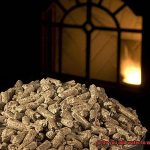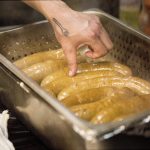Welcome to the mouth-watering world of Brazilian barbecue. Picanha, the king of churrasco, is an irresistible cut of beef that has grill enthusiasts salivating at first sight. But as you prepare to indulge in this decadent delight, there’s one question that’s bound to cross your mind: do you eat the fat on picanha?
For those new to this culinary sensation, picanha is a triangular-shaped cut taken from the top sirloin. The meat is seasoned with coarse sea salt and grilled over an open flame until it’s perfectly charred on the outside and juicy on the inside.
But here’s where things get interesting: some argue that the fat on picanha adds an extra layer of flavor and moisture, while others insist it’s best to trim it off and discard it.
So, what’s the verdict? In this blog post, we’ll explore both sides of the argument and give you everything you need to know about enjoying picanha. We’ll delve into the science behind its fat content, explore its cultural significance, and offer tips for preparing and serving this delicious cut.
Get ready for a tantalizing debate as we answer the age-old question: should you eat the fat on picanha?
Contents
The Benefits of Eating the Fat on Picanha
Picanha, the mouth-watering cut of beef that originates from Brazil and other parts of South America, is known for its distinct layer of fat on top. While some may opt to trim this fat off before cooking, there are numerous advantages to keeping it intact and savoring every bite.
First and foremost, the fat on picanha is a game-changer when it comes to flavor and moisture. As you cook this cut to perfection, the fat melts and infuses the meat with an intense, rich taste. This creates a juicy and succulent texture that is highly sought after in grilled meats.
But the benefits of picanha fat don’t stop there. It also contains essential nutrients such as omega-3 fatty acids and conjugated linoleic acid (CLA) that are vital for maintaining a healthy heart, brain function, and reducing inflammation in the body. By consuming the fat on picanha, you are providing your body with a healthy dose of these beneficial nutrients.
In fact, eating the fat on picanha can even aid in weight loss. Although it may seem counterintuitive since fat is often associated with weight gain, studies have shown that CLA can help reduce body fat while increasing lean muscle mass. So by incorporating the fat on picanha into your diet, you may be able to achieve a healthier body composition.
Let’s not forget about its heavenly taste. The crispy edges of the fat are an absolute delight for many meat lovers. It adds a unique texture and flavor that cannot be replicated with any other type of food.
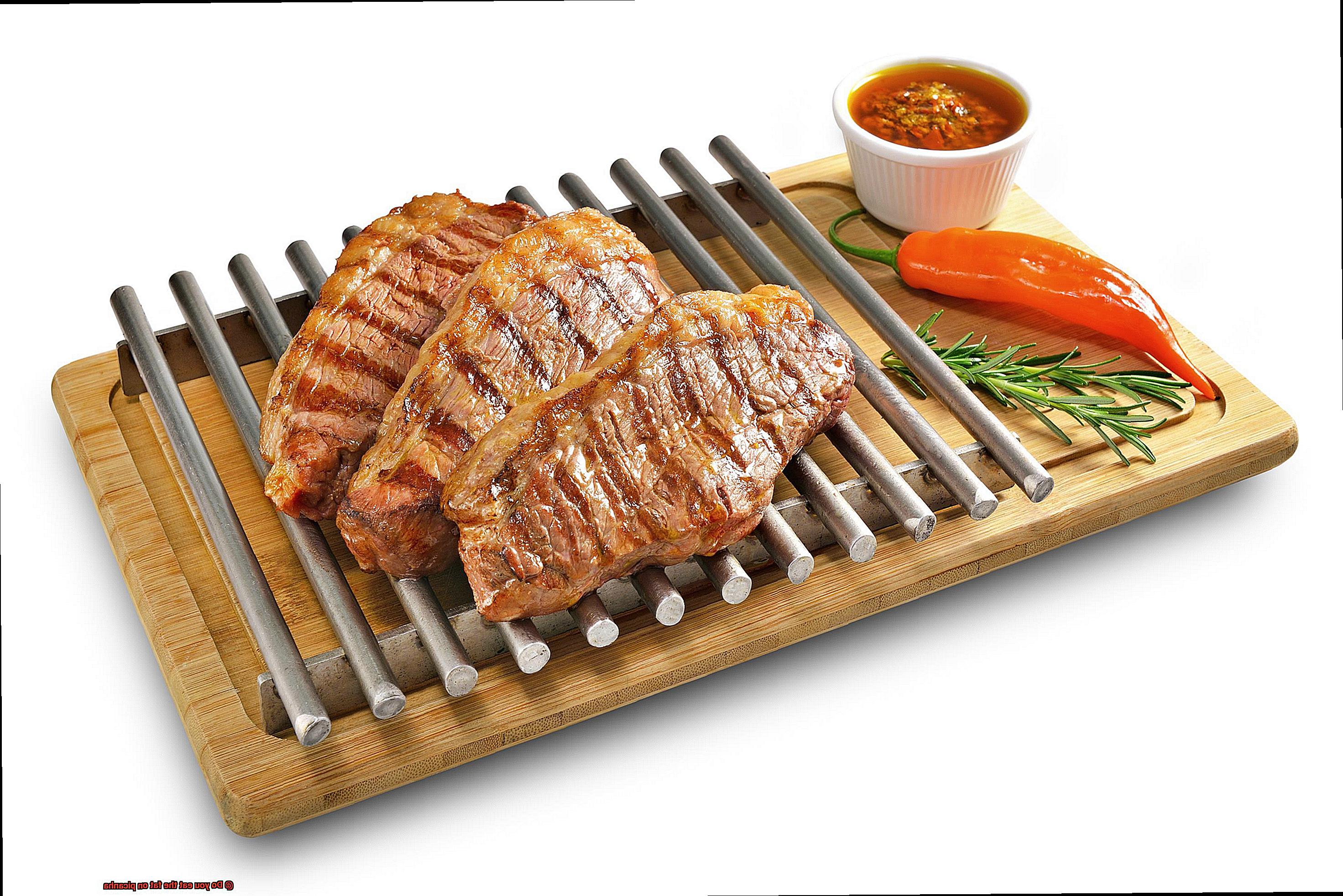
Of course, it’s essential to note that picanha fat can be high in calories and saturated fat. However, if you enjoy the taste and texture of the fat, there’s no reason why you can’t indulge in it as part of a balanced diet. Just make sure that it has been rendered adequately during cooking to ensure it’s crispy and easy to digest.
The Potential Risks of Eating the Fat on Picanha
It’s crucial to be aware of the potential risks associated with consuming excessive amounts of fat from picanha.
Firstly, the fat on picanha is high in saturated fat, which can lead to an increase in LDL (bad) cholesterol levels and raise the risk of heart disease. It’s recommended that individuals limit their intake of saturated fats to no more than 13 grams per day. Shockingly, a single serving of picanha can contain up to 20 grams of saturated fat, far surpassing the daily recommended limit.
Secondly, consuming too much fat can result in weight gain and obesity, which can increase the likelihood of developing serious health issues such as type 2 diabetes and high blood pressure. Therefore, it’s important to consume the fat on picanha in moderation.
To prevent potential health risks, consider cutting off excess fat before grilling and selecting leaner cuts of meat. Doing so will help reduce the amount of saturated fat consumed and lower your risk of heart disease, high cholesterol levels, and weight gain.
How to Render the Fat Properly for Optimal Taste
The fat is a crucial component of its taste, but not everyone knows how to render it properly. Here are some tips to ensure optimal taste:
Start with high-quality meat
When selecting your picanha, look for a cut with good marbling. This will ensure that the fat is evenly distributed throughout the meat and will melt properly during cooking.
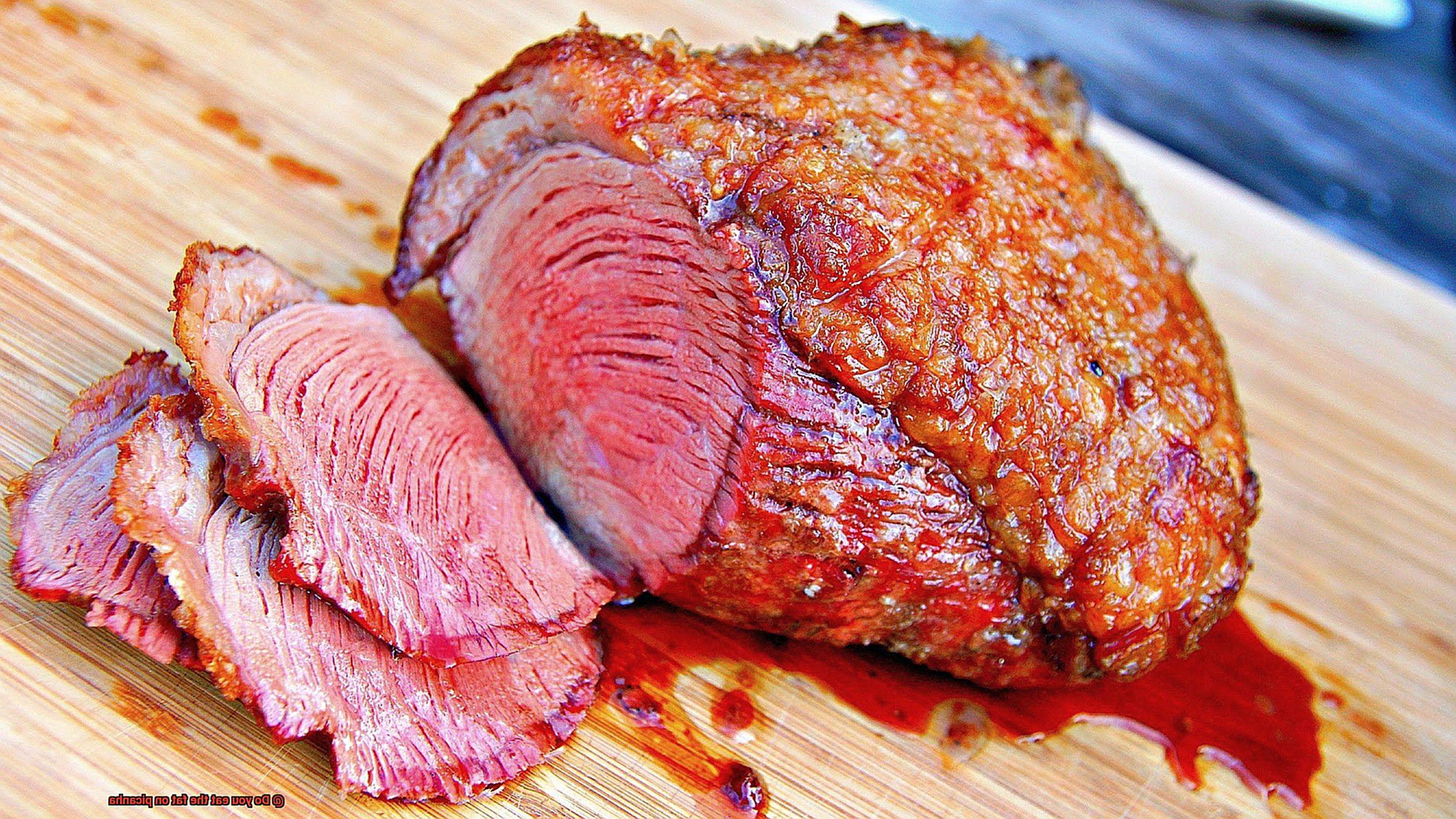
Season well
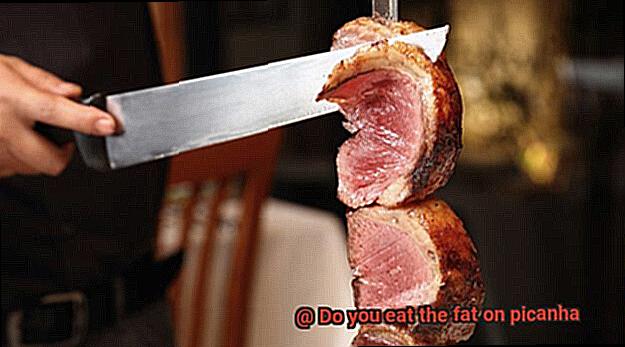
Before cooking, season the meat with salt and pepper to enhance its natural flavors.
Cook slowly
Whether using a grill or skillet, cook the picanha slowly at a low temperature. This will prevent burning and overcooking, and allow the fat to render properly.
Sear the fat cap side first
When grilling, start by searing the fat cap side of the picanha over high heat for a few minutes. This will help to start rendering the fat and create a nice crust on the outside of the meat.
Score the fat
Using a sharp knife, score the fat in a crosshatch pattern. This will help it to melt more evenly and also add more flavor to the meat.
Let it rest
Once cooked, let the picanha rest for a few minutes before slicing against the grain. This will allow the juices to redistribute and ensure that each slice is juicy and flavorful.
When rendering the fat on picanha, it’s important to keep an eye on the temperature and avoid cooking at too high of a heat. This will ensure that the fat is rendered properly without burning or overcooking the meat.
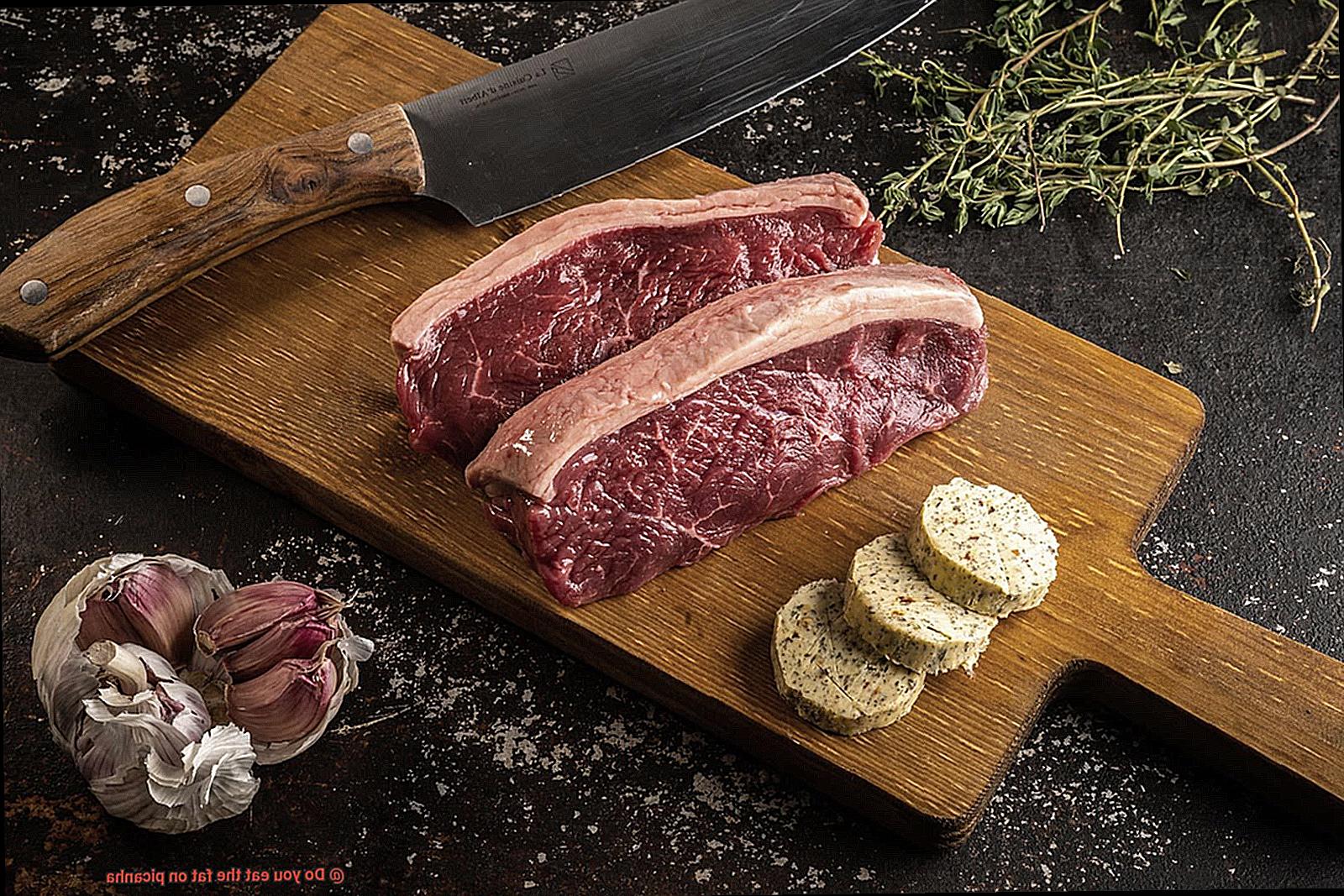
Tips for Cutting and Eating the Fat on Picanha
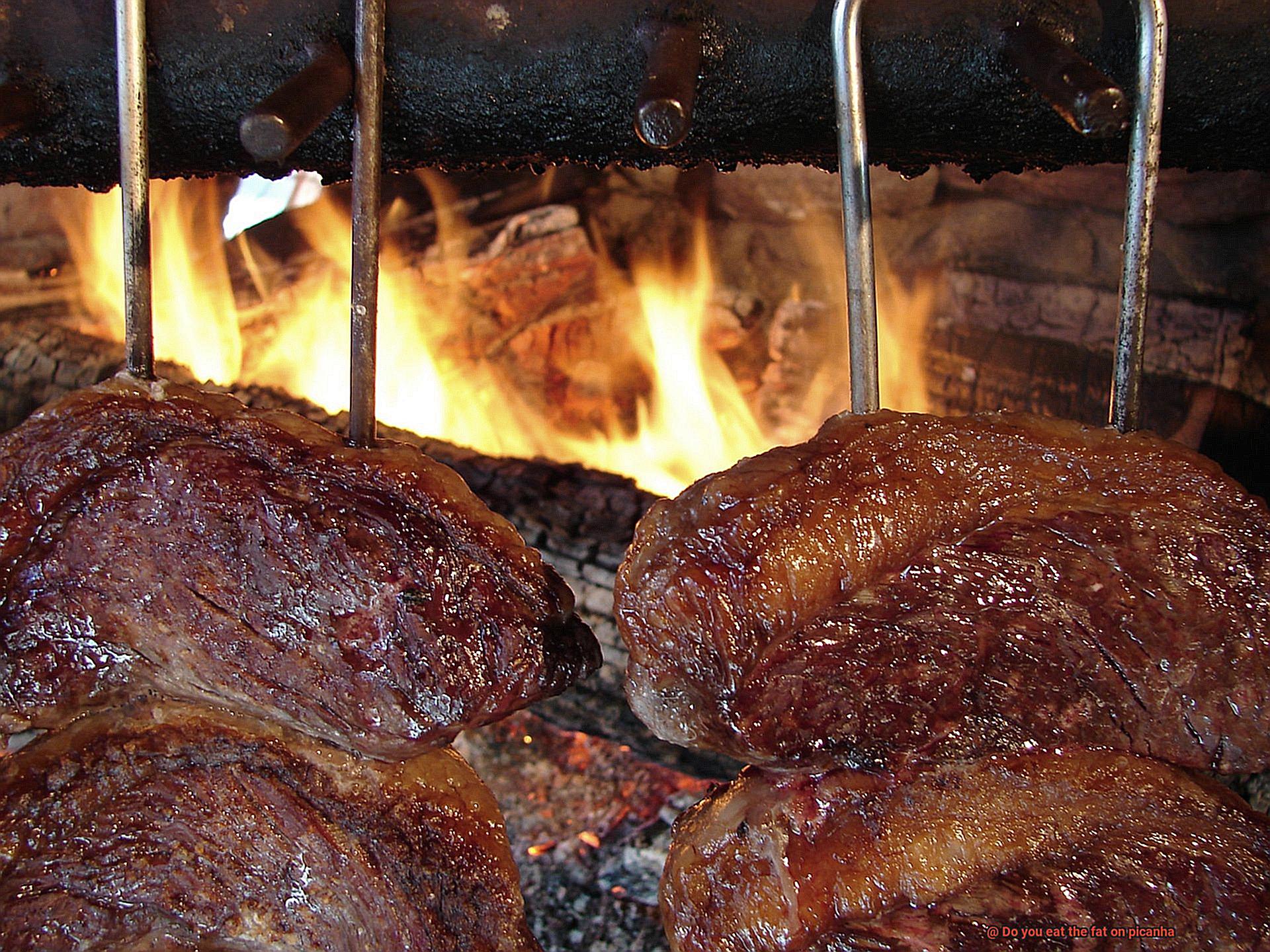
Picanha is a favorite cut of meat in Brazil, known for its unique flavor and succulent texture. However, the thick layer of fat on top can be daunting for those who are not familiar with it. Here are some tips for cutting and eating the fat on picanha like a pro.
Tip #1: Embrace the Fat
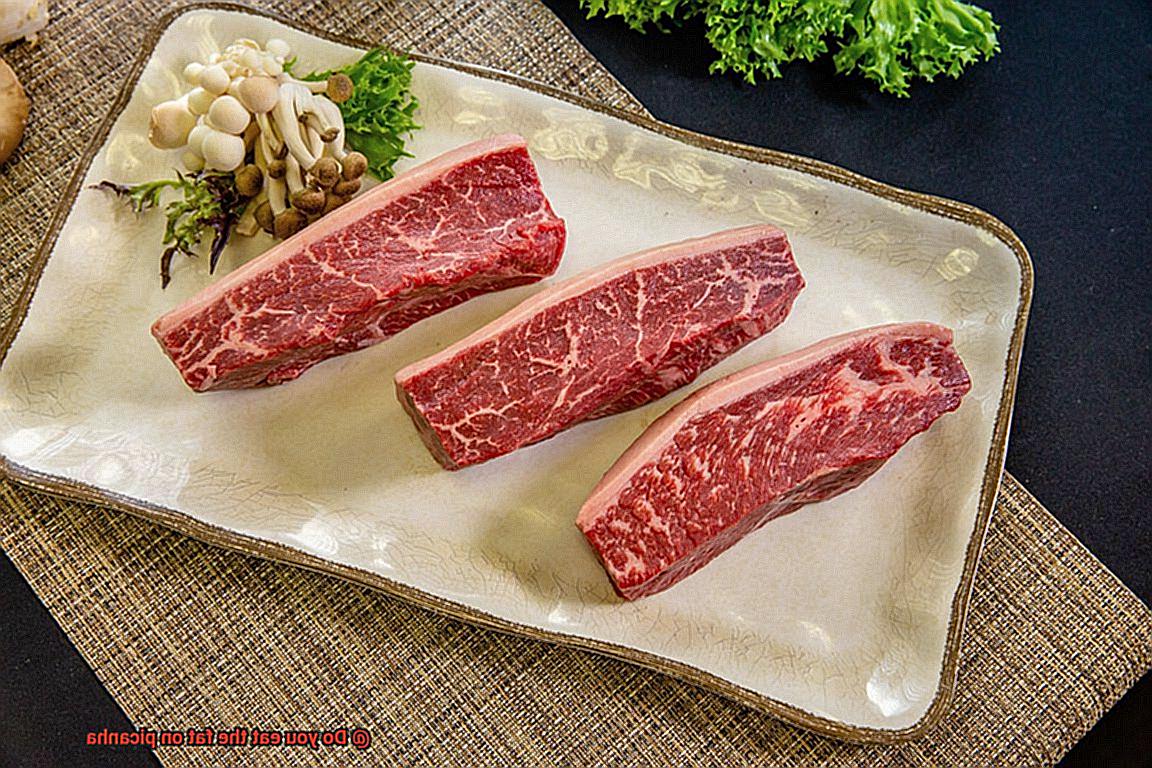
The fat cap on picanha is not just an optional addition; it is actually crucial to the flavor and texture of the meat. Therefore, when preparing the picanha for cooking, it’s important to leave a layer of fat on top of the meat. This will help protect the meat from drying out and give it a delicious flavor. Use a sharp knife to score the fat cap in a criss-cross pattern to help it render and crisp up during cooking.
Tip #2: Use a Sharp Knife
When cutting picanha, having a sharp knife is essential. A dull knife can damage the meat and make it harder to achieve clean cuts through the fat. A sharp knife will help you control the thickness of each slice, which is important when it comes to cooking and eating picanha.
Tip #3: Cut Against the Grain
When eating picanha, it’s important to cut against the grain of the meat. This will make the meat easier to chew and more tender. It will also help you avoid getting long strands of connective tissue in your mouth.
Tip #4: Savor Each Bite
If you choose to eat the fat on picanha, take small bites and chew slowly. The fat can be quite rich and fatty, so enjoying each bite will help you savor the flavor without getting overwhelmed.
Tip #5: Seasoning is Key
Picanha is versatile and can be seasoned with different spices and marinades. Some people prefer to dip each bite in coarse salt or chimichurri sauce for added flavor. Others like to experiment with different spices and rubs.
Tip #6: Experiment with Trimming
If you prefer a leaner cut of meat, you can trim some of the fat off before cooking. However, it’s still important to leave a thin layer on top of the meat while cooking. This will help keep the meat moist and flavorful.
Is it Necessary to Eat the Fat on Picanha?
Firstly, let’s talk about the composition of picanha. Unlike other cuts of beef where marbling is dispersed throughout, the fat on picanha is typically found in a thick layer on the outside of the meat. This means that if you choose to indulge in the fat, you’ll be consuming a significant amount of it all at once.
From a health perspective, it’s important to note that eating too much saturated fat can lead to heart disease. However, some experts argue that consuming moderate amounts of healthy fats- like those found in grass-fed beef- can improve overall health. So if you’re passionate about the flavor and texture of picanha fat, just keep moderation in mind.
Now, for those who prefer to trim off the excess fat, you can rest assured that it won’t significantly alter the taste of the meat. However, it’s worth noting that removing the fat will result in a slightly drier and less flavorful end result.
Ultimately, whether or not to eat the fat on picanha is a personal decision. To help you make an informed choice, here are some benefits and potential drawbacks:
Benefits:
- Adds flavor and juiciness to the meat
- Contains healthy fats that can improve overall health
Drawbacks:
- Consuming too much saturated fat can increase cholesterol levels and lead to heart disease
- Removing the fat will result in a slightly drier and less flavorful end result
Alternatives to Eating the Fat on Picanha
You have plenty of options to enjoy this delicious cut of beef without compromising your health or taste preferences. Here are some alternative ways to consume picanha:
Firstly, you can simply trim off the fat before cooking or eating the meat. This can help reduce the amount of saturated fat in your meal while still allowing you to relish the juicy and flavorful picanha.
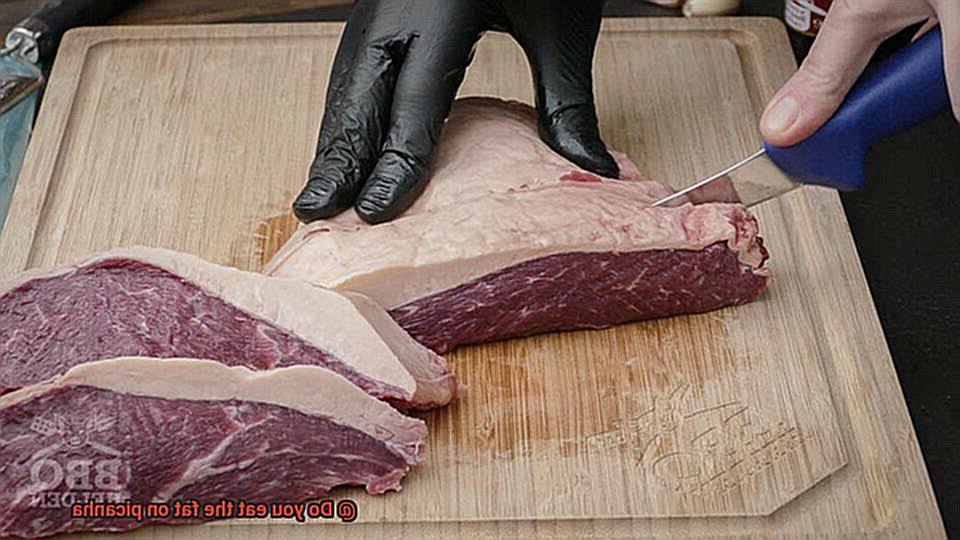
Another exciting option is to pair the picanha with a tasty sauce that complements the meat. Chimichurri, salsa verde, and garlic butter are all popular choices that can add an extra layer of flavor to your meal.
If you’re looking to balance out the richness of the meat without sacrificing flavor, consider pairing your picanha with some delicious vegetables. Roasted asparagus, grilled zucchini, or sautéed mushrooms are all great options that can help reduce the amount of fat in your meal while still delivering plenty of taste.
For those who want a healthier alternative to picanha, leaner cuts of beef like sirloin or flank steak may be a good choice. These cuts are lower in fat but still offer plenty of flavor and tenderness.
Finally, trying out different cooking methods can also help reduce the amount of fat in your picanha. Grilling over high heat can help render some of the fat away, while slow roasting or sous vide cooking allows you to control the amount of fat that stays on the meat.
How to Cook Picanha with or without the Fat Cap
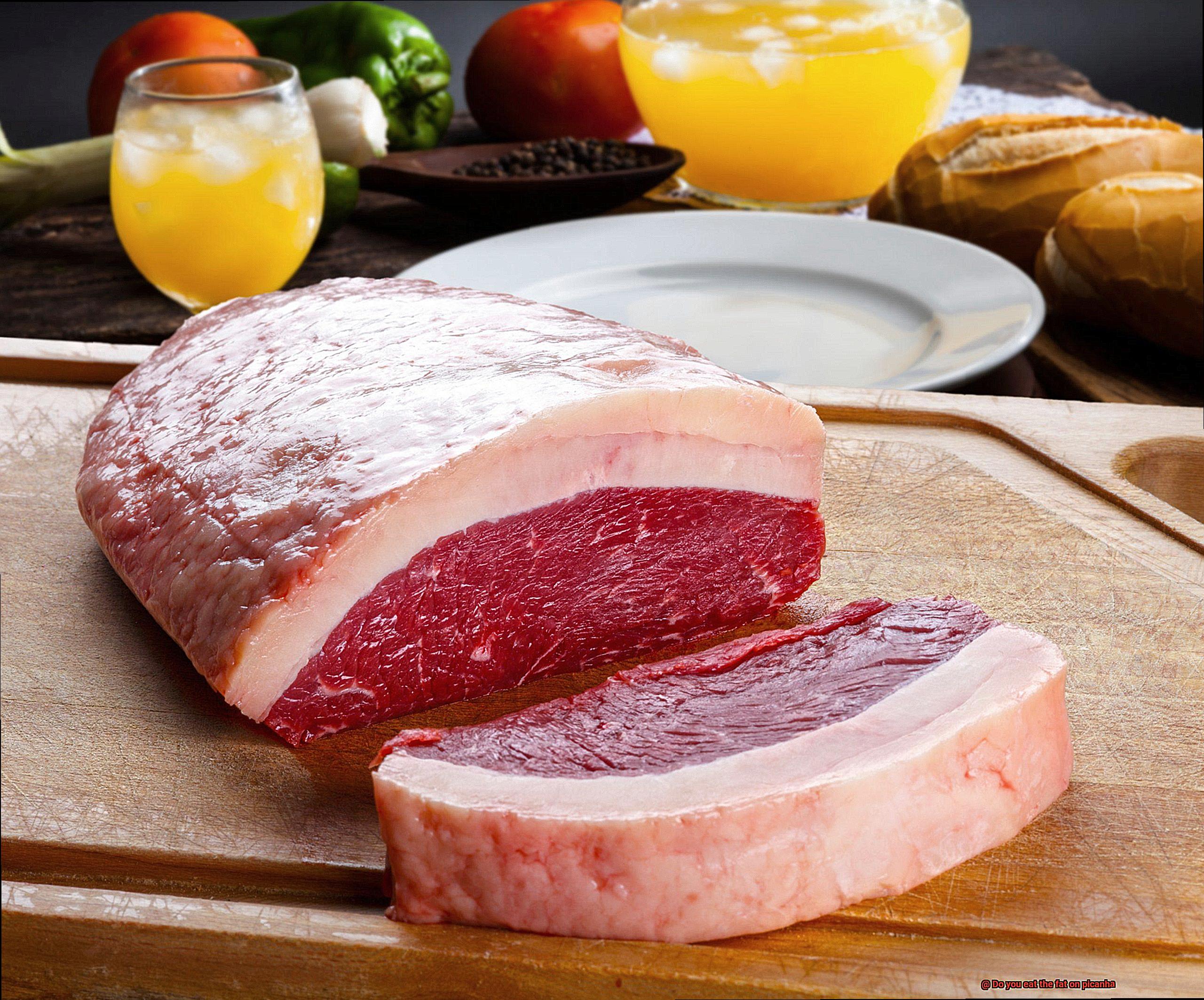
Picanha, a popular cut of beef in Brazil, is known for its unique flavor and texture. But when it comes to cooking picanha, the biggest question that arises is whether or not to leave the fat cap on. Some people believe that the fat adds flavor and moisture to the meat, while others prefer to trim it off for a leaner cut. Here are some tips for cooking picanha with or without the fat cap.
To Fat Cap or Not to Fat Cap?
The first decision you need to make is whether or not to leave the fat cap on. If you decide to leave it on, it’s important to score it before cooking. Scoring helps the fat render out and prevents it from shrinking and curling up during cooking. Make shallow cuts in a crosshatch pattern, being careful not to cut into the meat.
Cooking Picanha with the Fat Cap On
When grilling picanha with the fat cap on, it’s best to cook it slowly over indirect heat. Start by searing the meat on high heat for a few minutes on each side to get a nice crust, then move it to a cooler part of the grill and continue cooking until it reaches your desired doneness. Cook the meat fat side up so that the fat can melt and baste the meat as it cooks, keeping it moist and flavorful.
Cooking Picanha without the Fat Cap
If you prefer to remove the fat cap, carefully trim off the excess fat with a sharp knife, leaving just a thin layer on top of the meat. This will still add flavor and moisture without being overwhelming. When cooking picanha without the fat cap, be careful not to overcook it, as it can easily become dry and tough. Aim for medium-rare or medium doneness and let the meat rest for a few minutes before slicing and serving.
Experiment with Different Methods
Ultimately, whether or not to eat the fat on picanha is a matter of personal preference. Some people love the rich flavor and texture that the fat adds, while others find it too greasy. Experiment with different methods of cooking and try both options to see which you prefer. Marinating the meat before cooking can add flavor and moisture to picanha without the fat cap. You can also cook the meat over indirect heat on a grill or in an oven to help it cook evenly and stay moist.
The Best Way to Enjoy Picanha with or without the Fat Cap
Look no further than picanha, a popular Brazilian beef cut that is sure to impress. But the age-old question remains: should you leave the fat cap on or trim it off before cooking? As an expert in all things picanha, I’m here to give you the rundown on the best way to enjoy this delicious cut of beef.
Let’s start with the fat cap. This layer of fat covers one side of the picanha and can be a point of contention for many cooks. However, it’s largely a matter of personal preference. If you choose to leave it on, there are a few tips and tricks to make sure it doesn’t overpower the meat. Scoring the fat cap with a sharp knife before grilling is key – this allows the fat to render and crisp up, adding flavor and texture to the meat. Cooking the picanha indirectly over low heat for a longer period of time will also help the fat slowly melt and infuse the meat with its rich flavor.
On the other hand, if you prefer to trim the fat cap off, there are still plenty of ways to enjoy your picanha. Seasoning the meat generously with salt and pepper before grilling is a great way to bring out the natural flavors of the beef and create a delicious crust on the outside. You can also add other spices or marinades to enhance the flavor of the meat.
But that’s not all – there are even more ways to elevate your picanha experience. Here are a few sub-topics to consider:
- Sides: Picanha pairs well with a variety of sides, from classic grilled vegetables like asparagus and bell peppers to hearty carbs like mashed potatoes or rice.
- Wine Pairings: A bold red wine like Malbec or Cabernet Sauvignon can complement the richness of the picanha, while a lighter red like Pinot Noir can balance out the flavors.
- Cooking Techniques: While grilling is the most popular way to cook picanha, you can also pan-sear or roast it in the oven for equally delicious results.
WPgplk7xTHA” >
Conclusion
After exploring the age-old question of whether to eat the fat on picanha or not, it’s clear that there is no one-size-fits-all answer. The decision ultimately comes down to personal preference and health considerations.
For those who appreciate the rich flavor and juiciness that the fat brings, consuming it in moderation can be a tasty indulgence. However, it’s important to keep in mind that overindulging in saturated fat can lead to negative health consequences down the line.
On the other hand, if you prefer a leaner cut of meat or have specific dietary restrictions, trimming off excess fat before cooking is always an option. This will result in a healthier meal without sacrificing any of the deliciousness that picanha has to offer.
No matter how you choose to enjoy your picanha, there are countless ways to prepare and serve this beloved Brazilian dish. Whether you’re grilling it up for a summer barbecue or incorporating it into a hearty winter stew, the possibilities are endless.

